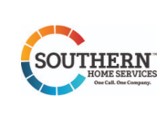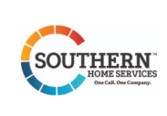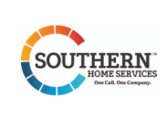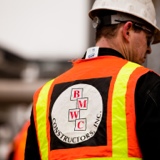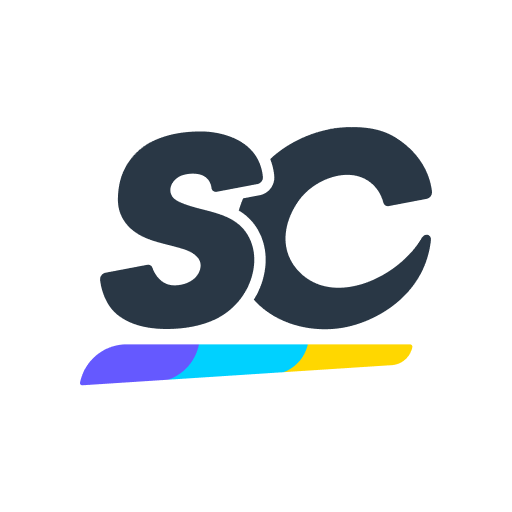Title Page
-
Safety Audit
-
Date of Audit:
-
Jobsite:
-
Project Manager:
-
Project Manager Assistant:
-
General Superintendent:
-
Superintendent:
-
Superintendent Assistant:
-
Audit Performed By:
-
Take a Few Pictures of Jobsite
SAFTEY AUDIT
-
1.0 OFFICE TRAILER
-
1.1 Garbage Receptacle Outside Office / Emptied at Regular Intervals?
-
1.2 Government / All-In-One Posters Up to Date (English & Spanish) (Scan QR Code on Poster to Verify) Order New Ones from Southern Safety)
-
1.3 First Aid Kit Readily Available and Stocked Properly
-
1.4 Urgent Care Map Posted
-
1.5 Emergency Room Map Posted
-
1.6 One-Site Health & Safety (Medic) Flyer Posted
-
1.7 Name of Identified Person #1 Certified in First Aid/CPR/AED (Verify on Dropbox 01 Certificate Folder)
-
1.8 Name of Identified Person #2 Certified in First Aid/CPR/AED (Verify on Dropbox 01 Certificate Folder). This is required if Person #1 is not available on-site at all times.
-
1.9 Name of Supervisory Staff, On-site during all Operations with a OSHA 30-Hour (4 Year Current) - (Verify on Dropbox 01 Certificate Folder)
-
1.10 Name of Supervisory Staff, On-site during all Operations with a OSHA 30-Hour (4 Year Current) - (Verify on Dropbox 01 Certificate Folder)
-
1.12 UFI Site Specific Plan Hard Copy Available (attach photo of cover page)
-
1.13 Stretch & Flex Being Done
-
1.14 Muster / Rally Point Identified & Communicated to Workers
-
1.15 Weekly Safety Meeting Completed (attach a picture of the sign in sheet)
-
1.16 Two Week Look Ahead for Elevation Changes for Upcoming Slabs: Verify Proper Equipment such as Ladders, Stripping Bars, Stripping Nets, Concrete Tie Off Straps, Styrofoam for Tables, Specific Training Needed, Table Leg Adjustment, PVC for HLL, Etc...)
-
1.17 Will Employee's Be Changing Task in the Next Week? Example: end of job, break down of form system, loading trucks, banding material, remedial work, etc.
-
2.0 CONEX ON SITE
-
2.1 SDS Dropbox Folder Up to Date (if SDS is needed send photo of chemical to Tom)
-
2.2 Broken Equipment Removed from Service / Tagged Out (tools, cords or retractables, etc)
-
2.3 Tools and Material Organized with a Clear Walk Path
-
3.0 COMMON GROUND AREA
-
3.1 Ladder (RED) Being Used to Access Truck Trailer
-
3.2 Flammable Storage Cabinet Used for More Than 25 Gallons of Fuel
-
3.3 Five Gallon Safety Can Not Dented with Flash Arrestor Screen Inside Neck
-
3.4 Chemical Drums (55 Gallon) Stored on Pallet and Secured with Banding
-
3.5 Proper Clothing, Hi-Viz Vests or Shirt, No Ripped Pants
-
3.6 Traffic Control / Training / Stop Slow Paddle w/ 7 Foot Handle / Hi-Viz Garment
-
3.7 Check Heat Index (take screen shot)
-
3.8 Is (FEELS LIKE) above 80 Degrees (Initial Heat Trigger)
-
3.9 Temperature Being Monitored with Sufficient Frequency to Determine Employees' Exposure to Heat
-
3.10 Break Areas that are Artificially or Naturally Shaded (shade from equipment is not sufficient) or Enclosed Spaces with Air Conditioning
-
3.11 Readily Accessible “cool” Drinking Water in an Amount Greater than One Quart Per Hour Per Employee
-
3.12 Allowing and Encouraging Employees to Take Paid Rest Breaks as Needed to Prevent Overheating
-
3.13 Regular and Effective Two-Way Communication with Employees on Signs and Symptoms of Heat Illness or Heat Stroke
-
3.14 Is (FEELS LIKE) above 90 Degrees (High Heat Trigger)
-
Signs and symptoms of heat-related illness” is a defined term that includes “headache, nausea, weakness, dizziness, elevated body temperature, muscle cramps, and muscle pain or spasms.” A “heat emergency” occurs when “the physiological manifestations of a heat-related illness” require “emergency response” and the term includes “excessive body temperature” accompanied by “loss of consciousness” or “disorientation.”
-
3.15 Employees Notified of the Importance of Staying Hydrated and Taking Breaks if Needed
-
3.16 Employees Aware of a Buddy System Where Coworkers Observe Each Other or Observation by a Supervisor or Safety Coordinator.
-
3.17 Acclimatization Protocols for New and Returning Unacclimatized Employees
-
3.18 Double-Wall Tank Being Used for Diesel?
-
3.19 Secondary Container in Place. Note: Bath Tub (required by Skanska and Turner) https://www.newpig.com/pig-tank-spill-containment-sump/p/PAK580?gad_source=2&gclid=EAIaIQobChMI-dvZ4f7eiAMV9Z9aBR3UJQcqEAQYByABEgIdufD_BwE
-
3.20 Properly Barricaded from Construction Traffic
-
3.21 No Smoking Sign Posted
-
3.22 Fire Extinguisher (20#) Within 25–75 Feet, Mounted on Sign Stand with Red Flag / Properly Charged
-
3.23 Bonding Strap Available for Transferring Diesel (Transfer of Category 1, 2, or 3 flammable liquids from one container to another shall be done only when containers are electrically interconnected (bonded).
-
4.0 Tables Being Assembled or Broken Down?
-
The Following Section 4 Questions are Specific for BUILDING OR DISMANTLING TABLES
-
4.1 Review and Question One Employee About the Morning's Pre-Task Meeting - Emphasis on Small Tools and Warning Signs for Heat Exposure
-
4.2 Drinking Water Available in Work Area
-
4.3 Proper Clothing, Hi-Viz Vests or Shirt, No Ripped Pants
-
4.4 Hand Protection - General Contractor Specific
-
4.5 Work Space Clean & Free From Excess Trash / Nails / Debris from Cutting Wood / Banding
-
4.6 Ear Protection Being Used While Using Impact Wrench
-
4.7 Electrical Cords in Good Repair, without Damage to the Outer Jacket Insulation, Plugs, or Pins
-
4.8 Inspect Hammers - Handle in Good Shape with No Grinder Cuts in Head
-
4.9 Safety Helmet Tightly Attached and Secured Under the Chin, With No More Than 2-finger Gap Between Strap & Chin
-
4.10 Full Body Harness Worn Correctly (Leg Straps in Rubber Band Keeper)
-
4.11Employees Trained in Material Handling (1 employee = 50 lbs. max |multiple employees = 150 lbs. max)
-
4.12 Extension Ladder Being Used to Access Table Top?
-
4.13 Labels in Place and Legible
-
4.14 Is the Ladder able to use the 4-1 Rule? And Does it Extend at Least Three Feet Above the Landing
-
4.15 Anti-Slip Rubber Feet Not Worn, Torn or Missing
-
4.16 Side Rails Not Split or Broken
-
4.17 Steps Clean, Free of Oil, Grease, Dirt, Paint, Not Bent, Connections all Tight
-
4.18 Sections not Separated or Being Used Independently
-
4.19 Ladders Being Used on Stable Level Surface
-
4.20 Does the Ladder's Length Allow to Safely Reach the Work Area
-
4.21 Locks Functional, Flippers in Place and Clear of Debris
-
4.22 Rope Connected to Fly Section of the Ladder and not Worn, Torn or Frayed
-
4.24 Step Ladder Being Used
-
4.25 Labels in Place and Readable
-
4.26 Anti-Slip Rubber Feet Not Worn, Torn or Missing
-
4.27 Areas Around Top & Bottom of Ladder Clear
-
4.28 Side Rails Not Split or Broken
-
4.29 Steps Clean, Free of Oil, Grease, Dirt, Paint, Not Bent, Connections all Tight
-
4.30 Ladders Being Used on Stable Level Surface
-
4.31 Can the Job be Done Without Using the Top Step of a Ladder
-
4.32 Used Correctly (Opened with Spreaders Locked Securely)
-
4.33 Does the Ladder's Length Allow to Safely Reach the Work Area
-
5.0 Shoring Being Assembled or Disassembled?
-
The Following Section 5 Questions are Specific for BUILDING OR DISMANTLING SHORING SCAFFOLDING
-
5.1 Review and Question One Employee About the Morning's Pre-Task Meeting - Emphasis on Small Tools and Warning Signs for Heat Exposure
-
5.2 Drinking Water Available in Work Area
-
5.3 Proper Clothing, Hi-Viz Vests or Shirt, No Ripped Pants
-
5.4 Hand Protection - General Contractor Specific
-
5.5 Work Space Clean & Free From Excess Trash / Nails / Debris from Cutting Wood / Banding
-
5.6 Inspect Hammers - Handle in Good Shape with No Grinder Cuts in Head
-
5.7 Safety Helmet Tightly Attached and Secured Under the Chin, With No More Than 2-finger Gap Between Strap & Chin
-
5.8 Full Body Harness Worn Correctly (Leg Straps in Rubber Band Keeper)
-
5.9 Employees Trained in the Use of Proper Fall Protection (Tie off starts with the first step onto the shoring scaffold and remains 100% until feet back onto working surface)
-
5.10 Employees Trained in Material Handling (1 employee = 50 lbs. max |multiple employees = 150 lbs. max)
-
6.0 Excavation Work Being Done?
-
The Following Section 6 Questions are Specific for EXCAVATIONS
-
6.1 Review and Question One Employee About the Morning's Pre-Task Meeting - Emphasis on Small Tools and Warning Signs for Heat Exposure
-
6.2 Inspection Completed & Documented
-
6.3 Heavy Equipment Evaluations Completed for Qualified Operators
-
6.4 Employees Aware of Excavation Hazards
-
6.5 Foot Protection (Sturdy work boots, Rubber Boots) (General Contractor Specific)
-
6.6 Impalement Hazards Protected
-
6.7 Air Compressor Being Used?
-
6.8 Inspection Completed and Documented
-
6.9 Condition of Hoses
-
6.10 Shut Off Valve on Blow Pipe
-
6.11 Whip Checks in Place to Prevent Accidental Disconnect
-
6.12 Ear Protection Being Used
-
6.13 Face Shields Being Used
-
7.0 Foundations Being Formed?
-
The Following Section 7 Questions are Specific for FOUNDATIONS
-
7.1 Review and Question One Employee About the Morning's Pre-Task Meeting - Emphasis on Small Tools and Warning Signs for Heat Exposure
-
7.2 Foot Protection (Sturdy work boots, Rubber Boots) (General Contractor Specific)
-
7.3 Electrical Tape Wrapped Completely Around Hard Hat to Identify Crew Members (Tape is placed towards top): Red = Transfer | Orange = Foreman | Yellow = Carpenter | Green = New Hire | Blue = Carpenter Asst.
-
7.4 Drinking Water Available in Work Area
-
7.5 Hand Protection - General Contractor Specific
-
7.6 Saw Horse Being Used / Top Plate Inspected for Proper Blade Adjustment
-
7.7 Impalement Hazards Protected
-
7.8 Proper Barricades in Place
-
7.9 Extension Ladder Being Used?
-
7.10 Labels in Place and Legible
-
7.11 Is the Ladder able to use the 4-1 Rule? And Does it Extend at Least Three Feet Above the Landing
-
7.12 Anti-Slip Rubber Feet Not Worn, Torn or Missing
-
7.13 Side Rails Not Split or Broken
-
7.14 Steps Clean, Free of all Oil, Grease, Dirt, Paint, Not Bent, Connections all Tight
-
7.15 Sections not Separated or Being Used Independently
-
7.16 Ladders Being Used on Stable & Level Surface
-
7.17 Secured / Walk-Thru Hand Grab Bars (temporary deck access only)
-
7.18 Does the Ladder's Length Allow to Safely Reach the Work Area
-
7.19 Locks Functional, Flippers in Place and Clear of Debris
-
7.20 Rope Connected to Fly Section of the Ladder and not Worn, Torn or Frayed
-
7.21 Is Concrete Being Placed?
-
7.22 Eye-Wash Station Available and Ready for Use
-
7.23 Washing Facilities Provide with Clean Water, Non-Alkaline Soap, and Clean Towels. Readily Accessible to Exposed Employees and Adequate for the Number of Employees Exposed
-
7.24 Proper Gloves and Waterproof Boots Provided (high enough to prevent wet cement from getting inside)
-
7.25 Training Provided and Hazards of Exposure to Portland Cement Communicated to Employees. Review SDS if Necessary
-
8.0 Generators Being Used? (Ground Level)
-
8.1 Fire Extinguisher Easily Accessible with Red Flag / Annual Certification Current / Properly Charged
-
8.2 Employees Aware of Shut Down and Refueling Procedure (shut off during breaks, then refuel once break is over) Proper Funnel being used to Re-Fuel, Placed on Firm and Well Ventilated Area
-
8.3 Plywood Under Generator if Located on Dirt
-
8.4 Per SWPPP requirements and Florida statute, anything that is fuel powered that cannot drive must have protection between the equipment and the bare earth to prevent groundwater contamination.
-
9.0 Crane Being Used?
-
9.1 Swing Radius Barricaded
-
9.2 Crane Radius Plan Available
-
9.3 Base of Tower Crane Enclosed and Capable of Being Locked After Hours
-
9.4 Documented Current Monthly Rigging Inspection Completed
-
9.5 Qualified Crane Signal Person/Rigger Identified with Orange Brim Guard or Equivalent
-
9.6 Foot Protection (Steel Toe) for Rigger and Signal Person
-
9.7 Red Reflective Vest worn by Rigger and Signal Person
-
9.8 Skip Pan Weight Limits Legible with Tags on Slings
-
9.9 Whistles Being Used Properly
-
9.10 Tag Lines of Proper Length for Specific Tasks
-
9.11 Are White FIBC Bags Only Being Used for One Trip https://codefine.com/blog/single-trip-vs-multi-trip-fibc-bags/
-
9.12 Power Lines Identified and Discussed with Signal Person
-
10.0 Work be Done on Elevated Slabs, Inside the Building or on the Roof?
-
10.1 Walk Paths Shall be Defined with Barriers, Flagging or Other Means that Identify the Safe Walking Areas
-
10.2 Netting in Place on Permanent Guardrail
-
10.3 Perimeter Lacing Installed on all Ellis Shores to Prevent Accidentally Falling Out of Building
-
10.4 Perimeter Aluminum Posts Tied Back with Rope or Equivilant Prevent Accidentally Falling Out of Building
-
10.5 Holes 2 Inches or More in Diameter Covered / Secured / Labeled
-
10.6 Workers Aware of Earbuds / Cellphone Use Policy (Spot Check one Worker Wearing a Face Covering)
-
10.7 Adequate Permanent Guardrails Installed Properly / Wood & Cable
-
10.8 Materials Stored and Stacked on Firm Foundation at Least 10 Feet from Edge of Slab
-
10.9 Work Space Clean & Free From Excess Trash / Nails / Debris from Cutting Wood / Banding
-
10.10 Task Lighting / Daylight / Night Time Pours Walkways & Ladders
-
11.0 Stairs or Stair Towers Being Used?
-
11.1 Stairways Equipped with Handrails Installed Between 30-37"
-
11.2 Metal Pan Stairs Filled with Wood or Concrete
-
11.3 Stair Landings Lighted with Clear and Clean Access
-
11.4 Scaffold Safety Awareness for Stair Towers
-
12.0 More Than One Single Ladder or One Double Gang (Two Way) Ladder for 25 or more People on any Level?
-
12.1 Areas Around Top & Bottom of Ladder Clear
-
12.2 Sign on Ladder Requiring Three Points of Contact
-
12.3 Pull Rope in Place so Employees can Safely Lift Tools or Equipment to Upper Levels
-
12.4 Is the Ladder Job-Made?
-
12.5 Steel Grab Bars Installed at top of Ladder
-
12.6 Is the Ladder able to use the 4-1 Rule? And Does it Extend at Least Three Feet Above the Landing
-
12.7 Ladder is Secured or Fastened from Movement at Top and Bottom of Ladder?
-
12.8 Extension Ladder Being Used?
-
12.9 Labels in Place and Legible
-
12.10 Is the Ladder able to use the 4-1 Rule? And Does it Extend at Least Three Feet Above the Landing
-
12.11 Anti-Slip Rubber Feet Not Worn, Torn or Missing
-
12.12 Side Rails Not Split or Broken
-
12.13 Steps Clean, Free of all Oil, Grease, Dirt, Paint, Not Bent, Connections all Tight
-
12.14 Sections not Separated or Being Used Independently
-
12.15 Ladders Being Used on Stable & Level Surface
-
12.16 Secured / Walk-Thru Hand Grab Bars (temporary deck access only)
-
12.17 Does the Ladder's Length Allow to Safely Reach the Work Area
-
12.18 Locks Functional, Flippers in Place and Clear of Debris
-
12.19 Rope Connected to Fly Section of the Ladder and not Worn, Torn or Frayed
-
13.0 Decking / Framing Being Performed?
-
The Following Section 13 Questions are Specific for DECKING & FRAMING CREW
-
13.1 Review and Question One Employee About the Morning's Pre-Task Meeting - Emphasis on Small Tools and Warning Signs for Heat Exposure
-
13.2 Chemical Contents Clearly Labeled as to Contents
-
13.3 Electrical Cords in Good Repair, without Damage to the Outer Jacket Insulation, Plugs, or Pins
-
13.4 Temporary Guardrails Installed Properly up to Leading Edge Barricades
-
13.5 Hand Protection - General Contractor Specific
-
13.6 Work Space Clean & Free From Excess Trash / Nails / Debris from Cutting Wood / Banding
-
13.7 Inspect Hammers - Handle in Good Shape with No Grinder Cuts in Head
-
13.8 Drinking Water Available in Work Area
-
13.9 Impalement Hazards Protected
-
13.10 Foot Protection (Sturdy work boots, cover heal) (General Contractor Specific)
-
13.11 Electrical Tape Wrapped Completely Around Hard Hat to Identify Crew Members (Tape is placed towards top): Red = Transfer | Orange = Foreman | Yellow = Carpenter | Green = New Hire | Blue = Carpenter Asst.
-
13.12 Fall Protection Required Beyond This Point Signs In Place
-
13.13 Orange Netting in Place for Active Deck
-
13.14 Safety Helmet Tightly Attached and Secured Under the Chin, With No More Than 2-finger Gap Between Strap & Chin
-
13.15 Tethers Being Used When Working Near the Edge of Building. (tools, phones, hard hats, etc)
-
13.16 Full Body Harness Worn Correctly (Leg Straps in Rubber Band Keeper)
-
13.17 Saw Horse Being Used / Top Plate Inspected for Proper Blade Adjustment
-
13.18 Workers Only Have the Required Amount of Tools in their Tool Bags. (this prevents tools from accidently falling off building)
-
13.19 Employees Trained in Material Handling (1 employee = 50 lbs. max |multiple employees = 150 lbs. max)
-
13.20 Employees Trained in Removing Banding from Material (do not stand in front of stack)
-
13.21 Horizontal Lifelines Being Used?
-
13.22 Horizontal Lifelines Installed Properly (pipes vertical, red strap handle closed, green on stop brake)
-
13.23 PVC Installed Vertical and in Stock at the Jobsite
-
13.24 Fall Protection Required Beyond this Point Sign in Place at Entry?
-
13.25 Employees Trained in Proper Use of HLL
-
13.26 STOPLINK Tensioned Properly (green visible = span less than 60 feet)
-
13.27 STOPLINK Labels Legible
-
13.28 Retractable Lifelines of Proper Length and Being Used Correctly
-
13.29 Retractables Inspected and Operating Correctly. Labels Legible
-
14.0 Vertical Formwork Being Done?
-
The Following Section 14 Questions are Specific for VERTICAL CREW
-
14.1 Review and Question One Employee About the Morning's Pre-Task Meeting - Emphasis on Small Tools and Warning Signs for Heat Exposure
-
14.2 Drinking Water Available in Work Area
-
14.3 Hand Protection - General Contractor Specific
-
14.4 Electrical Cords in Good Repair, without Damage to the Outer Jacket Insulation, Plugs, or Pins
-
14.5 Chemical Contents Clearly Labeled as to Contents / Form Oil / Curing Compound
-
14.6 Taper Tie(s), Plate(s), Wing Nut(s) Identified and Painted Red
-
14.7 Foot Protection (Sturdy work boots, cover heal) (General Contractor Specific)
-
14.8 Inspect Hammers - Handle in Good Shape with No Grinder Cuts in Head
-
14.9 Work Space Clean & Free From Excess Trash / Nails / Debris from Cutting Wood / Banding
-
14.10 Employees Trained in the Use of Proper Fall Protection (Tie off starts with the first step onto the formwork and remains 100% until feet back onto working surface)
-
14.11 Full Body Harness Worn Correctly (Leg Straps in Rubber Band Keeper)
-
14.12 Electrical Tape Wrapped Completely Around Hard Hat to Identify Crew Members (Tape is placed towards top): Red = Transfer | Orange = Foreman | Yellow = Carpenter | Green = New Hire | Blue = Carpenter Asst.
-
14.13 Adequate Temporary Guardrails Installed Properly on Shear Walls
-
14.14 Formwork Supported and Braced at all times so that it will be Capable of Supporting without Failure (at least two turnbuckles or connected to crane)
-
14.16 Impalement Hazards Protected
-
14.17 Saw Horse Being Used / Top Plate Inspected for Proper Blade Adjustment
-
14.18 Safety Helmet Tightly Attached and Secured Under the Chin, With No More Than 2-finger Gap Between Strap & Chin
-
14.19 Tethers Being Used When Working Near the Edge of Building. (tools, phones, hard hats, etc)
-
14.20 Employees Trained in Material Handling (1 employee = 50 lbs. max |multiple employees = 150 lbs. max)
-
14.21 Workers Only Have the Required Amount of Tools in their Tool Bags. (this prevents tools from accidently falling off building)
-
14.22 Step Ladder Being Used?
-
14.23 Labels in Place and Readable
-
14.24 Anti-Slip Rubber Feet Not Worn, Torn or Missing
-
14.25 Areas Around Top & Bottom of Ladder Clear
-
14.26 Side Rails Not Split or Broken
-
14.27 Steps Clean, Free of all Oil, Grease, Dirt, Paint, Not Bent, Connections all Tight
-
14.28 Ladders Being Used on Stable & Level Surface
-
14.29 Can the Job be Done Without Using the Top Step of a Ladder
-
14.30 Used Correctly (Opened with Spreaders Locked Securely)
-
14.31 Does the Ladder's Length Allow to Safely Reach the Work Area
-
14.32 Extension Ladder Being Used?
-
14.33 Labels in Place and Legible
-
14.34 Is the Ladder able to use the 4-1 Rule? And Does it Extend at Least Three Feet Above the Landing
-
14.35 Anti-Slip Rubber Feet Not Worn, Torn or Missing
-
14.36 Side Rails Not Split or Broken
-
14.37 Steps Clean, Free of all Oil, Grease, Dirt, Paint, Not Bent, Connections all Tight
-
14.38 Sections not Separated or Being Used Independently
-
14.39 Ladders Being Used on Stable & Level Surface
-
14.40 Secured / Walk-Thru Hand Grab Bars (temporary deck access only)
-
14.41 Does the Ladder's Length Allow to Safely Reach the Work Area
-
14.42 Locks Functional, Flippers in Place and Clear of Debris
-
14.43 Rope Connected to Fly Section of the Ladder and not Worn, Torn or Frayed
-
15.0 Generators Being Used? (Elevated Floors)
-
15.1 Fire Extinguisher Easily Accessible with Red Flag / Annual Certification Current / Properly Charged
-
15.2 Employees Aware of Shut Down and Refueling Procedure (shut off during breaks, then refuel once break is over) Proper Funnel being used to Re-Fuel, Placed on Firm and Well Ventilated Area
-
16.0 Air Compressor Being Used to Blow off Deck?
-
16.1 Inspection Completed and Documented
-
16.2 Operator(s) Aware of Hazards (hose management, start up and shut down, turning off air supply before disconnecting tools)
-
16.3 Hose Management: Keep hoses off the floor, secure the ends, and avoid kinking. Hoses should be rated for the compressor's maximum pressure and free of grease and oil<br>
-
16.4 Personal Protective Equipment Being Used (Ear Protection, Faceshield, Gloves)
-
17.0 Is Concrete Being Placed?
-
17.1 Eye-Wash Station Available
-
17.2 Washing Facilities Provide with Clean Water, Non-Alkaline Soap, and Clean Towels. Readily Accessible to Exposed Employees and Adequate for the Number of Employees Exposed
-
17.3 Proper Gloves and Waterproof Boots Provided (high enough to prevent wet cement from getting inside)
-
17.4 Training Provided and Hazards of Exposure to Portland Cement Communicated to Employees. Review SDS
-
18.0 Shoring, Shore-X, Hi-Load, Etc. Being Used?
-
18.1 Review and Question One Employee About the Morning's Pre-Task Meeting - Emphasis on Small Tools and Warning Signs for Heat Exposure
-
18.2 Employees Trained in Hazard Awareness with Erecting Shoring
-
18.3 Employees Trained in Material Handling (1 employee = 50 lbs. max |multiple employees = 150 lbs. max)
-
19.0 Post Tension Cables?
-
19.1 Cable Pulling Area Barricaded with Signs Posted
-
19.2 Workers Aware of the Dangers Involved with Drilling into Slab
-
19.3 Communication Between Cable Stressing and UFI Workers in the same Area
-
20.0 Outrigger Being Used?
-
20.1 Full Body Harness Worn Correctly (Leg Straps in Rubber Band Keeper)
-
20.2 Guardrail systems are in place and at proper height?
-
20.3 Plywood Installed on Both Sides at Landing Area - Top to Bottom
-
20.4 Double 2x4 In Place at the End of Outrigger?
-
20.5 Tie off Anchors Identified and in Place?
-
20.6 Orange Cones and Cone Bars in Place Around Entrance of Outrigger?
-
20.7 Shackle Pins Fixed from Rotation?
-
20.8 Fall Protection Required Beyond this Point Sign in Place at Entry?
-
20.9 Blue Notice Sign 5,000 Pound Cart Load in Place?
-
21.0 Is Remedial Work Being Done?
-
The Following Section 21 Questions are Specific for REMEDIAL CREW
-
21.1 Review and Question One Employee About the Morning's Pre-Task Meeting - Emphasis on Small Tools and Warning Signs for Heat Exposure
-
21.2 Work Space Clean & Free From Excess Trash
-
21.3 Chemical Contents Clearly Labeled as to Contents
-
21.4 SDS Dropbox Folder Up to Date (if SDS is needed send photo of chemical to Tom)
-
21.5 Inspect Hammers - Handle in Good Shape with No Grinder Cuts in Head
-
21.6 Tethers Being Used When Working Near the Edge of Building. (tools, phones, hard hats, etc)
-
21.7 Impalement Hazards Protected
-
21.8 Dark Lenses Are Not Being Worn Inside of Building, In Enclosed Areas or at Night.
-
21.9 Electrical Cords in Good Repair, without Damage to the Outer Jacket Insulation, Plugs, or Pins
-
21.10 Blue/Yellow Gloves Being Used with Chemicals
-
21.11 Faceshield with Safety Glasses Used When Grinding, Chipping, Working with Chemicals
-
21.12 Foot Protection (Sturdy work boots, cover heal) (General Contractor Specific)
-
21.13 Full Body Harness Worn Correctly (Leg Straps in Rubber Band Keeper)
-
21.14 Safety Helmet Tightly Attached and Secured Under the Chin, With No More Than 2-finger Gap Between Strap & Chin
-
21.15 Drinking Water Available in Work Area
-
21.16 Chemical Contents Clearly Labeled as to Contents (this includes secondary containers)
-
21.17 Hearing Protection being Used Where Required (Grinding / Chipping)
-
21.18 Employees Trained in Material Handling (1 employee = 50 lbs. max |multiple employees = 150 lbs. max)
-
21.19 Side Handles & Guards In Place on Grinders and Drills
-
21.20 Air Compressor Being Used?
-
21.1 Inspection Completed and Documented
-
21.2 Operator(s) Aware of Hazards (hose management, start up and shut down, turning off air supply before disconnecting tools)
-
21.3 Hose Management: Keep hoses off the floor, secure the ends, and avoid kinking. Hoses should be rated for the compressor's maximum pressure and free of grease and oil
-
21.4 Personal Protective Equipment Being Used (Ear Protection, Faceshield, Gloves)
-
21.26 Respirator Being Used (Double Strap or Half Face)?
-
21.27 Training on Vacuums, Grinder Shroud, Emptying Bag, Sweeping, Drilling, Chipping with Water
-
21.28 Using more than 4 Hours per Day?
-
21.29 Worn more than 30 Days Per Year?
-
21.30 Employees Fit Test Current (Required Every 12 months. Verify Certificate on Dropbox)
-
21.30 Medical Clearance Required (Chest X-Ray, OSHA Medical Questionnaire, Lung Capacity Test, TB Test) (Schedule with Tom)
-
21.31 Step Ladder Being Used?
-
21.32 Labels in Place and Readable
-
21.33 Anti-Slip Rubber Feet Not Worn, Torn or Missing
-
21.34 Areas Around Top & Bottom of Ladder Clear
-
21.35 Side Rails Not Split or Broken
-
21.36 Steps Clean, Free of all Oil, Grease, Dirt, Paint, Not Bent, Connections all Tight
-
21.37 Ladders Being Used on Stable & Level Surface
-
21.38 Can the Job be Done Without Using the Top Step of a Ladder
-
21.39 Used Correctly (Opened with Spreaders Locked Securely)
-
21.40 Does the Ladder's Length Allow to Safely Reach the Work Area
-
21.41 Extension Ladder Being Used?
-
21.42 Labels in Place and Legible
-
21.43 Is the Ladder able to use the 4-1 Rule? And Does it Extend at Least Three Feet Above the Landing
-
21.44 Anti-Slip Rubber Feet Not Worn, Torn or Missing
-
21.45 Side Rails Not Split or Broken
-
21.46 Steps Clean, Free of all Oil, Grease, Dirt, Paint, Not Bent, Connections all Tight
-
21.47 Sections not Separated or Being Used Independently
-
21.48 Ladders Being Used on Stable & Level Surface
-
21.49 Secured / Walk-Thru Hand Grab Bars (temporary deck access only)
-
21.50 Does the Ladder's Length Allow to Safely Reach the Work Area
-
21.51 Locks Functional, Flippers in Place and Clear of Debris
-
21.52 Rope Connected to Fly Section of the Ladder and not Worn, Torn or Frayed
-
22.0 Stripping Formwork Being Done?
-
The Following Section 22 Questions are Specific for STRIPPING CREW
-
22.1 Stripping Signs Posted with area Barricaded
-
22.2 Review and Question One Employee About the Morning's Pre-Task Meeting - Emphasis on Small Tools and Warning Signs for Heat Exposure
-
22.3 Safety Helmet Tightly Attached and Secured Under the Chin, With No More Than 2-finger Gap Between Strap & Chin
-
22.4 Hand Protection - Task and General Contractor Specific
-
22.5 Hearing Protection being Used When Required
-
22.6 Foot Protection (Sturdy work boots, cover heal) (General Contractor Specific)
-
22.7 Employees Aware of Metal Inserts for Boots (Nail Punctures)
-
22.8 Full Body Harness Worn Correctly (Leg Straps in Rubber Band Keeper)
-
22.9 Inspect Hammers - Handle in Good Shape with No Grinder Cuts in Head
-
22.10 Dark Lenses Are Not Being Worn Inside of Building, In Enclosed Areas or at Night.
-
22.11 Drinking Water Available in Work Area
-
22.12 Fall Hazard Areas Barricaded Properly with Signage
-
22.13 Lower Level Controlled Access Zone Set up with Spotters
-
22.14 Holes 2 Inches or Wider Covered / Secured / Labeled
-
22.15 In Addition to Guardrails, Elevator Shaft Cover Installed & Maintained Such that any UFI Worker will not Fall more than 25 Feet (attach photo of cover)
-
22.16 Impalement Hazards Protected
-
22.17 Materials Stored and Stacked on Firm Foundation at Least 10 Feet from Edge of Slab
-
22.18 Employees Trained to Operate Ellis Shores Properly (hand and foot placement)
-
22.19 Work Space Clean & Free From Excess Trash / Nails / Debris from Cutting Wood / Banding
-
22.20 Employees Trained to Properly Remove Banding from Stacks (stand to the side)
-
22.21 Employees Aware of Material Handling (1 employee = 50 lbs. max |multiple employees = 150 lbs. max)
-
22.22 Stripping Nets in Good Shape (have nets been ordered)
- Pass
- Fail
- Fail But Corrected
- Not Applicable
-
22.23 Step Ladder Being Used?
-
22.24 Labels in Place and Readable
-
22.25 Anti-Slip Rubber Feet Not Worn, Torn or Missing
-
22.26 Areas Around Top & Bottom of Ladder Clear
-
22.27 Side Rails Not Split or Broken
-
22.28 Steps Clean, Free of all Oil, Grease, Dirt, Paint, Not Bent, Connections all Tight
-
22.29 Ladders Being Used on Stable & Level Surface
-
22.30 Can the Job be Done Without Using the Top Step of a Ladder
-
22.31 Used Correctly (Opened with Spreaders Locked Securely)
-
22.32 Does the Ladder's Length Allow to Safely Reach the Work Area
-
22.33 Extension Ladder Being Used?
-
22.34 Labels in Place and Legible
-
22.35 Is the Ladder able to use the 4-1 Rule? And Does it Extend at Least Three Feet Above the Landing
-
22.36 Anti-Slip Rubber Feet Not Worn, Torn or Missing
-
22.37 Side Rails Not Split or Broken
-
22.38 Steps Clean, Free of all Oil, Grease, Dirt, Paint, Not Bent, Connections all Tight
-
22.39 Sections not Separated or Being Used Independently
-
22.40 Ladders Being Used on Stable & Level Surface
-
22.41 Secured / Walk-Thru Hand Grab Bars (temporary deck access only)
-
22.42 Does the Ladder's Length Allow to Safely Reach the Work Area
-
22.43 Locks Functional, Flippers in Place and Clear of Debris
-
22.44 Rope Connected to Fly Section of the Ladder and not Worn, Torn or Frayed
-
23.0 Tables Being Used
-
The Following Section 23 Questions are Specific for TABLES
-
23.1 Review and Question One Employee About the Morning's Pre-Task Meeting - Emphasis on Small Tools and Warning Signs for Heat Exposure
-
23.2 Safety Helmet Tightly Attached and Secured Under the Chin, With No More Than 2-finger Gap Between Strap & Chin
-
23.3 Hand Protection - Task and General Contractor Specific
-
23.4 Foot Protection (Sturdy work boots, cover heal) (General Contractor Specific)
-
23.5 Employees Aware of Metal Inserts for Boots (Nail Punctures)
-
23.7 Inspect Hammers - Handle in Good Shape with No Grinder Cuts in Head
-
23.8 Dark Lenses Are Not Being Worn Inside of Building, In Enclosed Areas or at Night.
-
23.9 Drinking Water Available in Work Area
-
23.12 Holes 2 Inches or Wider Covered / Secured / Labeled
-
23.14 Materials Stored and Stacked on Firm Foundation at Least 10 Feet from Edge of Slab
-
23.13 Impalement Hazards Protected
-
23.15 Employees Trained to Operate Ellis Shores Properly (hand and foot placement)
-
23.16 Work Space Clean & Free From Excess Trash / Nails / Debris from Cutting Wood / Banding / / Aluminum Clips
-
23.17 TABLES BEING FLOWN?
-
23.18 Lower Level Controlled Access Zone Set up with Spotters
-
23.19 Spotter in Place with Radio, Air Horn, Whistle
-
23.20 Rigging Straps Inspected with Tags and No Red Yarn Showing
-
23.21 Full Body Harness Worn Correctly (Leg Straps in Rubber Band Keeper)
-
23.22 Fall Hazard Areas Barricaded with Signage
-
23.23 Tag Lines of Proper Length (no shorter than 20 feet)
-
23.24 Tethers Being Used When Working Near the Edge of Building. (tools, phones, hard hats, etc)
-
23.25 Rollers Tied Back to Structure During Flying Operation
-
23.26 Table Trusses and Top Cleared of all Loose Material / Debris
-
23.27 Length for Chains Labelled on Truss Legs
-
23.28 Truss Identified (painted) for Lowering Device Location
-
23.29 Sender and Receiver Identified with Each Other
-
23.30 Pull Stick Available for Taglines Retrieval (receiver)
-
23.31 Step Ladder Being Used?
-
23.32 Labels in Place and Readable
-
23.33 Anti-Slip Rubber Feet Not Worn, Torn or Missing
-
23.34 Areas Around Top & Bottom of Ladder Clear
-
23.35 Side Rails Not Split or Broken
-
23.36 Steps Clean, Free of all Oil, Grease, Dirt, Paint, Not Bent, Connections all Tight
-
23.37 Ladders Being Used on Stable & Level Surface
-
23.38 Can the Job be Done Without Using the Top Step of a Ladder
-
23.39 Used Correctly (Opened with Spreaders Locked Securely)
-
23.40 Does the Ladder's Length Allow to Safely Reach the Work Area
EMAIL AUDIT TO THE FOLLOWING:
-
Project Manager, General Sup't, Project Sup't and copy Todd Volheim, Bill Nagele, Heman Higgins, Tom Isola






